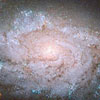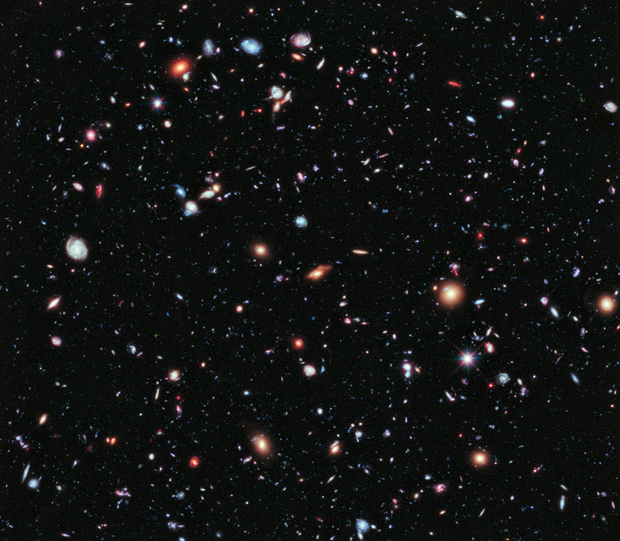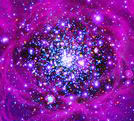A Universe of Stars May Exist Outside Galaxies

In 1998, researchers using the Hubble Space Telescope made an astounding discovery. Gazing at the Virgo Cluster of galaxies a dizzying 53.8 million light years distant, they spotted 600 red giant stars adrift in intergalactic space. Ripped from their home galaxies during tumultuous collisions with others, the stars were no longer governed predominantly by the gravity of one galaxy, but by the faint, distant pulls of many. Artists imagined the skies of planets in orbit around these lonely stars: blank and dark, flecked only with the “fuzzy apparitions” of nearby galaxies.
At the time, the study’s lead astronomer Harry Ferguson estimated that there might be as many as 10 million more of these “rogue” stars in the Virgo Cluster, stars less luminous than red giants and thus too indistinct to see with any certainty. A new report published in the journal Science shows that Ferguson may have vastly underestimated their number.
According to the study, as many as half of the universe’s stars may dwell outside of galaxies, representing a stellar population previously unknown to science!
Caltech astrophysicist Michael Zemcov led the international team of researchers that contributed to the fascinating finding, which materialized out of an effort to explain fluctuations in the Extragalactic Infrared Background light (EBL), basically all of the accumulated radiation in the universe resulting from star formation. Analyzing data collected from the CIBER mission, an orbiting instrument with tools specifically designed to observe the EBL, the researchers determined that light from stars stripped from their galaxies best explained the fluctuations, ruling out effects from primordial galaxies and black holes in the process.
“If confirmed, these observations reveal an unexpected stellar population, with as many as half the stars in the local universe being outside galaxies,” NASA astronomer Harvey Moseley commented. “It is remarkable that such a major component of the universe could have been hiding in plain sight as an infrared background between the stars and galaxies.”
The presence of all these intergalactic stars would also help explain another peculiar mystery, Zemcov notes. Currently, the light produced from known populations of galaxies and quasars is not nearly enough to explain observations of hydrogen, which serves as an accurate proxy for the amount of light in the universe. In other words, there are far more photons of light than there should be. The quandary has been termed the “photon underproduction crisis.”
The Carnegie Institute of Washington’s Juna Kollmeier described the baffling puzzle thusly: “It’s as if you’re in a big, brightly-lit room, but you look around and see only a few 40-watt lightbulbs.”
The stars residing outside of galaxies could very well be those missing lightbulbs, or at least some of them anyway.
Stars go rogue when they are ejected from their home galaxies as a result of galaxy collisions. In the cosmic sense, interactions between the one hundred billion galaxies in the known universe are actually quite common, and have likely occurred many, many times over the 13.8 billion year lifespan of the universe. Our own Milky Way Galaxy is set to collide with the Andromeda Galaxy in roughly four billion years. Seeing as how our sun will still be around by that time, it potentially could join the newly found and immense population of intergalactic stars, and the Earth may find itself along for the ride.
Source: Zemcov et. al. “On the origin of near-infrared extragalactic background light anisotropy.” Science 7 NOVEMBER 2014 • VOL 346 ISSUE 6210
Posted in Science For The New Agewith comments disabled.





